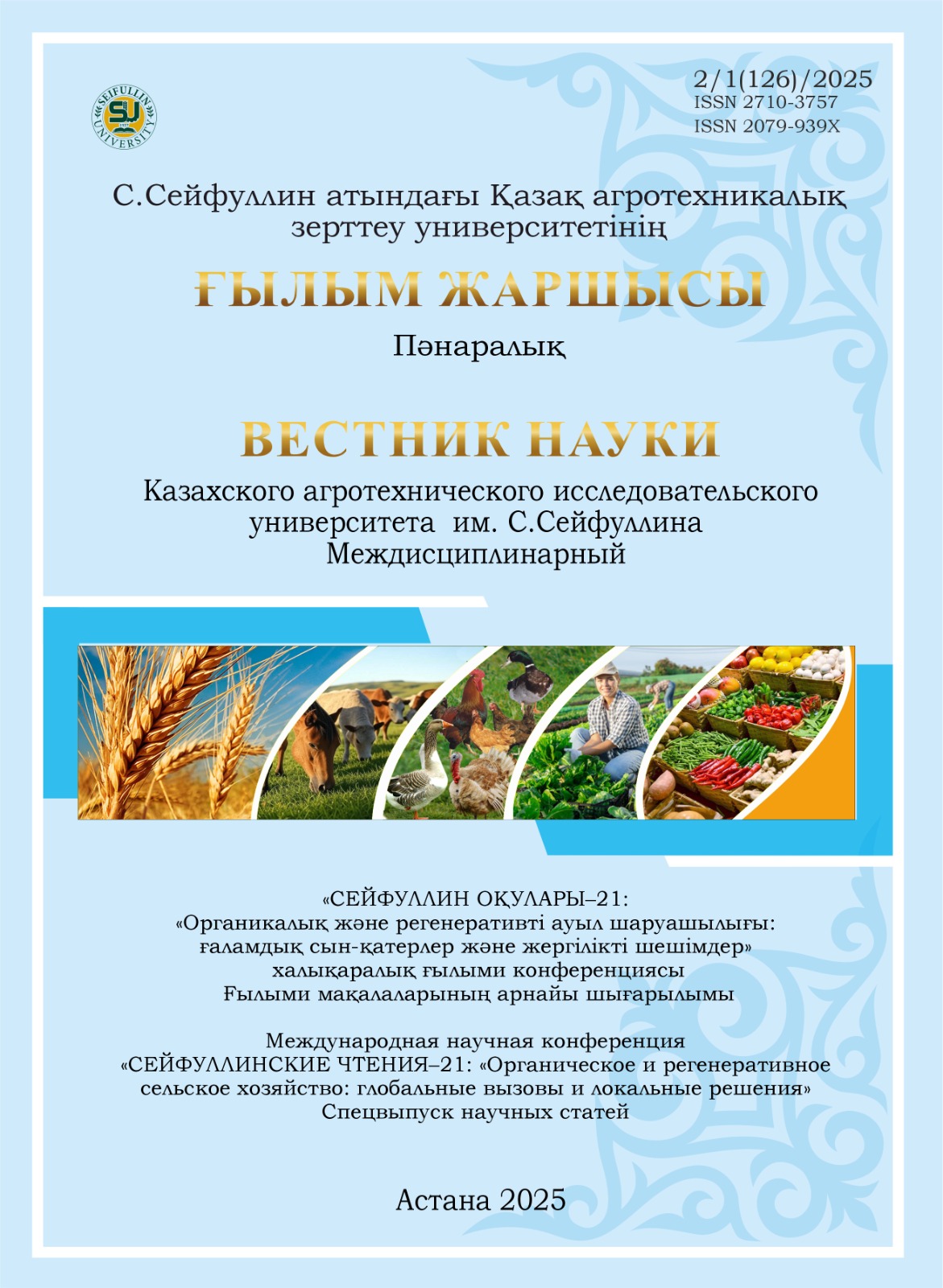Application of biopreparations for accelerated processing of cattle manure into organic fertilizer
DOI:
https://doi.org/10.51452/kazatu.2025.2/1(126).1924Keywords:
manure; composting; animal waste; biopreparations; microorganisms.Abstract
Background and Aim. The article addresses the issue of accelerating the processing of livestock waste, particularly cattle manure. The relevance stems from the need to utilize manure in a way that is environmentally safe, efficient, and cost-effective. Untreated manure contributes to soil contamination with weed seeds, the spread of pathogens and the infiltration of chemicals into surface and groundwater. The aim of the study was to comparatively evaluate the effectiveness of biopreparations in converting cattle manure into organic fertilizer.
Materials and Methods. To achieve the goal, five manure piles were formed: one control and four treatment variants biological preparations "Baikal", "Trichodermin", and two microbial consortia. The analyses were carried out in an accredited laboratory using standard agrochemical methods at different stages of composting: before treatment, mid-process, and at the end.
Results. The results showed a decrease in manure moisture content over time: control – from 67% to 54%, Baikal – from 67% to 57%, Trichodermin – from 79% to 57%, consortium 1 – from 68% to 44%, and consortium 2 – from 67% to 47%. The organic matter content increased significantly with the use of biopreparations and consortia, particularly in consortia 1 and 2, where the increase exceeded 8%. The pH values ranged from 6.1 to 7.5.
Conclusion. The concentration of nutrients (nitrogen, phosphorus, potassium) increased as composting progressed. In the controll group nitrogen increased by 0.17%, phosphorus by 0.13%, potassium by 0.21%. Treatment with Baikal raised nitrogen by 0.18%, phosphorus by 0.3%. Trichodermin increased nitrogen by 0.58%, phosphorus by 0.16%, and potassium by 1.35%. The consortiums showed the most notable increases: consortium 1- nitrogen by 0.16%, phosphorus by 0.59%, and potassium by 1%; consortium 2 - nitrogen by 0.26%, phosphorus by 0.43%, and potassium by 0.87%. Intensive microbiological activity facilitated the transition of elements from organic form to mineral forms (NPK), enhancing soil fertility. Regular compost turning further stimulated microbiological processes and supported the accumulation of plant-available nutrients.

